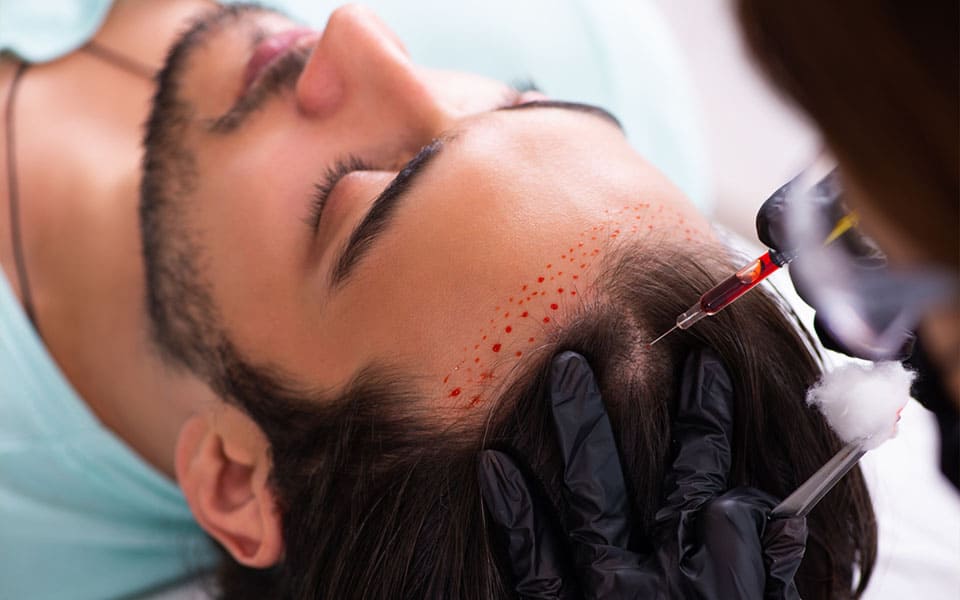For those suffering from hair loss, a hair transplant can be an incredibly effective solution in restoring your appearance and giving you back the confidence that has been diminished with thinning or balding. But, how do you go about finding what type of hair transplant is best for you? As it turns out, this is not always an easy process as there are a variety of techniques available which all come with their own advantages and disadvantages. In this blog post, we will explore the different types of hair transplants to help arm you with knowledge so that you can make the right decision when considering a hair transplant procedure.

1. Follicular Unit Transplantation (FUT)
Follicular unit transplantation (FUT) is a trusted, time-tested form of hair transplantation. It involves harvesting a strip of skin from the donor area, typically at the back of the scalp. Using the strip harvested, individual follicular units can then be extracted and transplanted onto the desired area of the scalp. FUT has long been considered the gold standard in hair transplants due to its natural results. Highly skilled doctors are trained to patiently harvest each follicular unit using better techniques for yield maximization. Over the years, its success rate has only increased as advanced techniques have become available.
2. Follicular Unit Extraction (FUE)
Follicular unit extraction (FUE) is a revolutionary method for hair transplants that produces impressive results with a minimally invasive procedure. Rather than the traditional FUT procedure, which involves removing a strip of scalp from the donor area, FUE works by individually removing donor follicles from the scalp and then transplanting them to the desired area. Furthermore, this advanced technique leaves little-to-no scarring, allowing it to be hardly noticeable even when close to the hairline. Appointments with skilled professionals are often necessary in order to get the most out of this method and receive healthy, natural-looking hair growth in targeted areas. On the whole, FUE hair transplant is highly effective, producing aesthetically pleasing results with minimal disruption or damage to other areas on the scalp.
3. Scalp Micropigmentation (SMP)
Scalp micropigmentation (SMP) is a safe and non-invasive form of hair restoration that allows individuals to regain the natural look of their hair. By using specialized needles, a pigment approved by the FDA is carefully tattooed onto the scalp to build up a thicker-looking appearance that effectively imitates natural hair follicles. SMP presents an optimal option for those who may not be suitable candidates for surgical procedures due to health constraints or concerns about potential side effects. With its quick healing process and minimal risk of allergic reaction or scarring, SMP can produce long-lasting, natural-looking results with little downtime and no pain involved in the treatment.
4. Platelet-Rich Plasma (PRP)
Platelet-rich plasma (PRP) has gained in popularity over the last few years as a method of promoting hair growth. Ultrasound-guided injections of PRP into the scalp can successfully promote natural hair growth without the need for medications, artificial stimulants, or invasive surgery. In initial clinical trials in which PRP was used to increase hair counts and treat alopecia, around 70% of participants were found to have an improved condition. Long-term studies on PRP treatments also showed significant benefits with respect to increased hair counts after 12 months and even more improvement reported after 18 months when compared to baseline measurements. For those who are unhappy with their current level of hair growth, the potential indicated by these studies should provide good reason to look into this option.
5. Low-Level Laser Therapy (LLLT)
Low-level laser therapy (LLLT) is an innovative and effective hair restoration method that has been used for the past few decades in medical settings. While the exact mechanisms behind LLLT are still not fully understood, numerous studies have proven its efficacy in treating various forms of hair loss. Essentially, this procedure involves using a low-level laser direct to areas of the scalp with thinning hair, stimulating new healthy follicles to grow over time. For those struggling with male pattern baldness and alopecia, LLLT offers hope of non-surgical treatments which can produce great outcomes.
FUE is a better option for those who want to minimize the appearance of surgery and have a shorter recovery time. However, it is also more expensive. FUT may be a good choice for those who are looking for the most affordable option. Ultimately, the best type of hair transplant for you depends on your individual needs and goals. There are many factors to consider when choosing which type is best for you such as your age, the current state of your hair, how much hair you have lost, and your budget. Ultimately it is up to you and your doctor to decide which option is best for you and will give you the results that you desire.